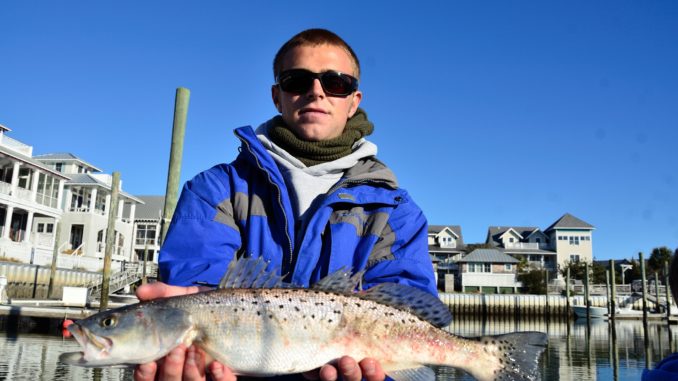
Man-made marinas and canals along the North Carolina/South Carolina state line will hold plenty of winter speckled trout.
By February, Old Man Winter is making his mark on the Carolinas, and one great thing about living along the coast of North Carolina or South Carolina is the predictable, pleasant days. Sure, the temperatures can drop into the 20s with an occasional snow flurry, but anglers can expect a quick turnaround, with 60-degree weather just around the corner. And the best part is the winter fishing for speckled trout.
Speckled trout aren’t called “winter trout” without good reason. While some slingshot into the ocean during the cold months, a large group of trout hunkers down in the estuaries. No doubt, specks are still cold-blooded creatures that can’t survive water that’s about to turn into ice. And fortunately, unique places scattered all up and down the coast offer a thermal refuge and safe haven for wintering trout. Anglers with an educated eye or good memory will know right where to find those locales.
According to Kyle Hughes of Speckulator Inshore Fishing Charters out of Ocean Isle Beach, N.C., the trout fishing gets tougher overall, but can be well worth the effort at the right time and in the right places.
“It gets tougher this time of year, for sure,” he said. “If you pick the right days and the right spots, you can have a great day on the water.”
Every year, trout show up in their historic winter hideaways, much more refined than during the fall feeding frenzy, the weather being the major driving factor.
“Where every spot should have fish during the fall, (in winter) we only find fish in certain places where the water is a little bit warmer than everywhere else,” Hughes said.
Looking for warmer water in February may seem silly, but places do exist where the water warms more quickly and retains more heat on warmer days. Trout like these places, and the populated regions along the Carolina coastline offer many good possibilities.
Anglers can look to boat a limit of trout over the winter in two main kinds of places, according to Hughes: marinas and man-made canals.
“The marinas and canals from Southport (N.C.) all the way to the state line are ideal. Some of the hot spots over the years have been the Bald Head Marina, St. James Marina, Coquina Harbor, Marsh Harbour Marina, and the canals at Holden Beach and Ocean Isle Beach,” he said.
These man-made features can hold big numbers of wintering trout, because the concrete sides and bottoms of the structure will draw and hold heat. Hughes will hit many of these spots in February, but fish won’t always be in the same canals and marinas year after year. He will look for a congregation of fish, and when he finds one, he can count on them staying in the same general area until the spring warm up.
Some canals and marinas can get shallow during the winter; he prefers to fish them on mid tide due to the clear water.
“The mid-tide is best because of the clear water. On low water, you will get right on top of the fish, and they can see you. Somewhere in the middle is the best,” he said.
On the other side of the coin, trout wintered along the coast long before condos and marinas arrived. Trout still will slide into refuge areas associated with river systems and creeks where Hughes spends his other half of his fishing trip.
The upper extent of the many smaller creeks and rivers in Brunswick County will hold significant populations of fish during the winter, including decent populations of trout. These areas are special because of the abundance of black mud and oysters. The sun heats up the mud and oysters on low tide and warms the waters in these areas as the tide rolls back in.
Small potholes adjacent to these areas will concentrate trout under seasonal conditions.
“These places are similar to the places anglers find reds in winter, and many times, they will be mingled together,” Hughes said. “We like to fish these places on the low end of the tide when the fish are congregated in these potholes.”
Not too far from the Hughes’ territory lies South Carolina’s Pawley’s Island and Litchfield Beach, both known for superior winter trout fishing. The small estuary systems associated with the tour beach communities physically resemble the small creeks and river systems across the state line, but with one major difference that guide Mark Young of Tug-O-War Outfitters loves.
“Litchfield and Pawley’s are relatively shallow and lack significant freshwater runoff that makes these spectacular winter trout places,” Young said. “The majority of the estuaries’ area are fed by a major river system, and (that) can keep the water temperatures low.”
The Pawley’s and Litchfield estuaries are unique, fed primarily by ocean water that remains relatively stable over the winter and will rarely get too cold. Additionally, they are relatively small, relatively shallow, and blanketed by oysters that allows for routine thermal heating.
However, the trout will be spread out in these areas the same way they are in the fall and spring. Young looks for specific features that are similar to Hughes’ findings across the border.
“I look for areas that are 3 to 6 feet deep on low tide near large oyster rakes and creek mouths,” Young said.
Essentially, these areas fish very similarly to small creeks in another locale. On low tide, the majority of these estuaries are dry, funneling fish into small potholes and the limited deep channels.
Since the estuaries are on the small side to start with, they even fish smaller on low tide, as very few deep areas exist. Young will start fishing a half-mile from the inlets and work his way upstream until the deep channels and potholes play out. And most of the wintering trout he finds are not small fish, either.
“We catch some of the biggest fish we catch all year in these small waters,” Young said.
From the first of winter through the beginning of spring, diehard speckled trout anglers can catch a limit long before catching a cold. Yet, the fishing tactics aren’t typical of the fall flurry. Anglers need to hone in on a more refined location and a different playbook to get bit under these conditions.
DESTINATION INFORMATION
HOW TO GET THERE — The waters of western Brunswick County, N.C., are accessible from US 17 via NC 904 and NC 130. Public boat ramps are at the bridges across the ICW at Sunset Beach, Ocean Island Beach and Holden Beach. The waters around Pawley’s Island and Litchefield Beach are accessible from the two public boat ramps — on SR 46 on the north end and on SR 104 on the south end. Both access areas are small and only feasible for small boats. Target man-made canals in Ocean Isle Beach and Holden Beach, as well as man-made marinas, Sasspan Creek, Lockwood Folly River and Shallotte River, plus small estuaries behind Pawley’s Island and LItchefield Beach.
WHEN TO GO — Winter techniques for trout begin when the water temperature drops below 52 degrees, usually in January and continuing into March. While the fish will bite intermittently throughout the day, days of warm weather will be better and the afternoons after the waters have had significant time to warm.
BEST TECHNIQUES — Mud minnows under a one-inch bream cork with a light split-shot or a light weighted Carolina rig. For artificials, any shrimp imitation is tough to beat: Vudu, D.O.A., and Betts Perfect Sinker. Baitfish imitations are good winter choices: MirOlures 52M, 27MR, 17MR, 14MR, D.O.A., TerrorEyz, Rapala X-Rap, Egret Zombie Rip-Stick and Vudu Mullet, and any of the soft-plastic paddletail or curlytail choices. Use bright and natural colors. Anglers should vary retrieve for all artificial lures. But as a general rule, a slower stop-n-go retrieve will produce the best results. Spinning tackle is preferred, with 7-foot, medium-light to medium action rods for long casts and reels spooled with 10- to 14-pound braid with a 14- to 20-pound fluorocarbon leader.
FISHING INFO/GUIDES — Kyle Hughes, Speckulator Inshore Fishing Charters, 910-840-7186, www.oceanislefishingguide.com; Mark Young, Tug-O-War Charters, 843-685-6725. See also Guides and Charters in Classifieds.
ACCOMMODATIONS — Causeway Inn, Ocean Isle Beach, N.C., 910-579-0743; Brunswick County Vacation Guide, 910-755-5517, www.ncbrunswick.com; Hampton Inn, Pawley’s Island, 843-235-2000; Myrtle Beach Area Convention and Visitors Bureau, www.mbchamber.com.
MAPS — Navionics, 800-848-5896, www.navionics.com; The Good Spots, 800-411-0185, www.thegoodspots.com.

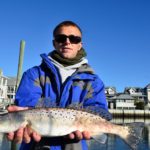
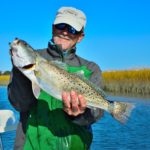
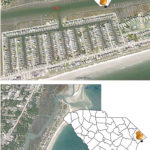
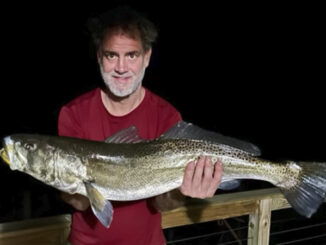



Be the first to comment